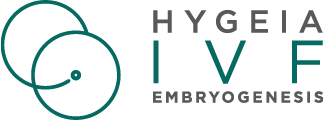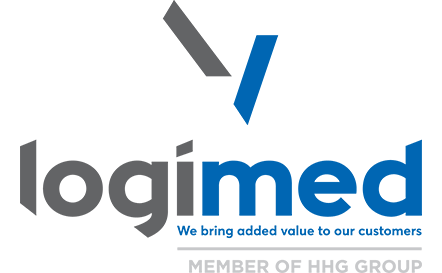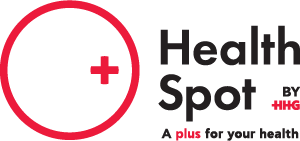A cutting-edge heart ultrasound technique designed to accurately detect myocardial injuries.
What is a Stress Echo?
A Stress Echo is a state-of-the-art, non-invasive diagnostic test that accurately and safely assesses the presence and severity of coronary artery disease, a condition linked to angina pectoris and myocardial infarction. Additionally, it is useful for evaluating other heart conditions, including valvular diseases and heart failure. The procedure, which involves no radiation exposure, is performed by a certified heart specialist in a dedicated ultrasound lab and typically lasts 30 to 40 minutes.
A Stress Echo provides valuable insights into the function of the myocardium and heart valves under conditions of increased stress, enhancing diagnostic accuracy. It is also useful in assessing myocardial viability and inotropic reserve and can be employed to monitor patients with a history of myocardial infarction, angioplasty, or coronary artery bypass grafting.
Who is it for?
A Stress Echo is a non-invasive test of high diagnostic value with multiple applications in modern cardiology. It is primarily used to diagnose coronary artery disease in patients presenting with suspected symptoms, such as chest pain, easy fatigue, pain, or shortness of breath during physical activity, and/or risk factors like hypertension, high cholesterol, or diabetes. It helps determine with certainty whether there is significant narrowing of one or more coronary arteries. Thanks to ultrasound imaging of the heart during ‘stress,’ the accuracy of this method greatly surpasses that of the traditional treadmill stress test, approaching 90%.
A Stress Echo is also frequently used in patients with a history of myocardial infarction, angioplasty, or coronary artery bypass grafting (CABG) to evaluate heart function, perform risk stratification, and diagnose any new narrowings in coronary arteries or grafts. Lastly, patients with valvular diseases, such as aortic stenosis or mitral regurgitation, may undergo a Stress Echo to evaluate the performance of the valve and heart under stress conditions, helping to guide the selection of the most appropriate treatment.
How is it performed?
The test combines the familiar heart ultrasound (triplex) with a stress test. In its most common form, known as Pharmacological Stress Echo, the patient lies on their side while connected to an electrocardiogram and a blood pressure monitor, with a small intravenous catheter placed in the arm. The medication is then administered, gradually increasing the heart rate. Throughout the test, the doctor uses ultrasound to monitor the heart, while simultaneously measuring blood pressure and recording an electrocardiogram. Once the heart rate reaches the target level, final ultrasound images are captured, and the administration of the medication is stopped, allowing the heart rate to quickly return to normal levels. The entire test typically lasts no more than 30 minutes.
Regarding the Exercise Stress Echo, the increase in heart rate is achieved through physical activity, either on a treadmill or an ergometer bike, while the doctor monitors the heart using ultrasound either during or immediately after the exercise.
How does it differ from the standard stress test?
Similar to the classic treadmill stress test, the purpose of this test is to evaluate cardiac function under conditions of increased oxygen demand. However, unlike the standard stress test, the doctor utilizes ultrasound to monitor the heart's function during and after stress, providing crucial additional information that significantly enhances the test's diagnostic value. Real-time visualization of the heart and valves allows for more accurate diagnostic assessments.
'Stressing' of the heart can be achieved through traditional walking on a treadmill, using an ergometric bicycle, or—more commonly—by administering a medication that gradually and controllably elevates the heart rate while the patient remains in a supine position. This represents the second key difference from the standard treadmill stress test, as it addresses limitations such as easy fatigue, shortness of breath, poor physical condition, respiratory or orthopedic issues, and advanced age. Thus, patients who are unable to undergo or complete a standard stress test can still safely undergo a Stress Echo.
How should the patient prepare for the test?
For optimal preparation, the patient should be fasting and avoid smoking for at least two hours before the test. It is also important to consult with their heart specialist regarding the potential need to stop certain medications that slow the heart rate, such as beta-blockers. It is crucial not to discontinue any medication without the doctor’s guidance. On the day of the test, the patient should bring all necessary documents, such as previous test results, coronary angiography findings, or medication details. The Stress Echo often requires the use of a contrast agent, which the patient should bring on the day of the test. If the test involves exercise, it is recommended that the patient wear comfortable clothing and shoes.
How safe is the test?
The test is very safe, and complications are rare. The administration of the medication is carefully controlled and can be stopped immediately if needed, while the heart's function is continuously monitored throughout the procedure.
Most of the time, the patient only experiences brief tachycardia, which quickly subsides once the test ends. The contrast agent used in this test is different and has no biochemical affinity with those used in other imaging tests, such as CT or MRI. Allergic reactions to the contrast agent are extremely rare, and it is not toxic to the kidneys or other organs. There is a slight risk of experiencing arrhythmia, chest discomfort, or nausea; however, the doctor will take immediate measures if any of these occur. As with all stress tests, there is a very small risk of angina symptoms or coronary events (approximately 1 in 3,000 tests). These typically occur in high-risk patients with extensive disease and are essentially a manifestation of their condition that becomes apparent during the test. In any case, the test is performed in a properly equipped laboratory by specialized heart specialists with extensive experience in this procedure.
What happens after the test?
After the test is completed, the heart rate quickly returns to normal levels. The patient can remain in the waiting area for about 30 minutes before leaving and resuming daily activities. The only restriction is to avoid drinking coffee for about two hours.























